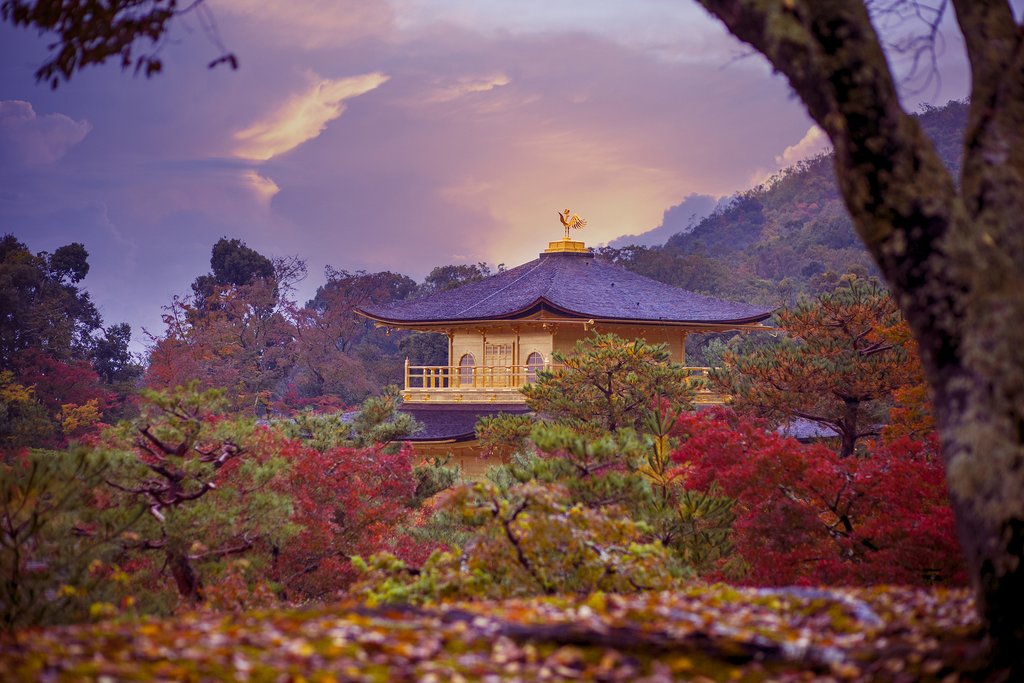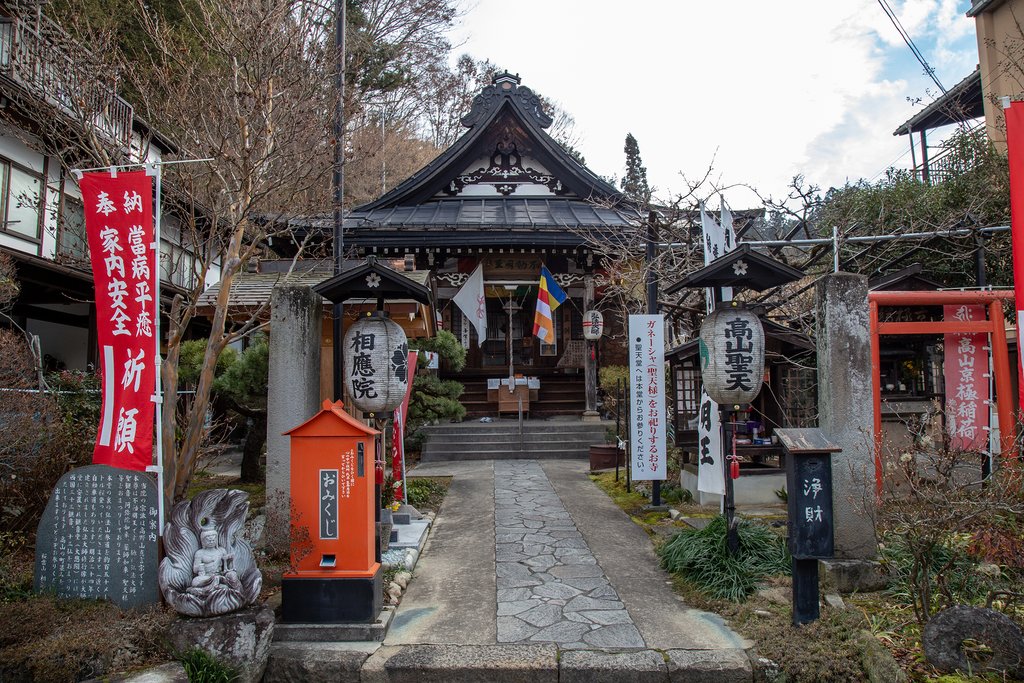
Culture & History of Japan - 14 days

Highlights
- Soak in mountain hot springs & spot snow monkeys in Yudanaka
- Discover the historic post towns of the Nakasendo Trail
- Stroll the atmospheric alleys of Edo-era Takayama
- See the spectacular mountain valleys & traditional houses of Shirakawa-go
- Sleep at the mountaintop monastery of Mount Koya
Brief Itinerary
| Day | Highlights | Overnight |
|---|---|---|
| Day 1 | Arrive in Tokyo | Tokyo |
| Day 2 | Discover Tokyo's Top Attractions | Tokyo |
| Day 3 | Visit Obuse & Yudanaka Hot Springs | Yudanaka Onsen |
| Day 4 | Tour Matsumoto Castle & Narai | Narai |
| Day 5 | Walk on the Nakasendo Trail | Tsumago |
| Day 6 | Transfer to Takayama | Takayama |
| Day 7 | Go Back in Time in Takayama | Takayama |
| Day 8 | See Traditional Farmhouses in Shirakawa-go | Shirakawa |
| Day 9 | Walk Along the Canals in Kyoto | Kyoto |
| Day 10 | Visit Shrines & Temples in Kyoto | Kyoto |
| Day 11 | Day Trip to Nara | Kyoto |
| Day 12 | Enjoy a Scenic Train Ride to Mount Koya | Mt Koya |
| Day 13 | Have a Night on the Town in Tokyo | Tokyo |
| Day 14 | Depart Tokyo |
Detailed Itinerary
Day 1: Arrive in Tokyo

Welcome to Japan! Get oriented in Tokyo with a visit to the world's tallest tower. At 2,080 feet (634 meters), the Tokyo Skytree offers spectacular views as far as Mount Fuji from its 360-degree observation deck. Afterward, take a walk through the grounds of Sensoji, the city's oldest and most historically significant temple. Legends say it was founded when two brothers fished a statue of the goddess Kannon out of the Sumida River. The neighboring Asakusa Shrine also highlights the stark differences between Shinto and Buddhist belief systems.
As night falls, make your way to Shibuya, home to the vibrant Shibuya Crossing. The area is packed with restaurants, bars, and nightclubs, perfect for a night out on the town.
Day 2: Discover Tokyo's Top Attractions

There's so much to see and do in Tokyo—you have many options today! Explore the artificial island of Odaiba, a hot spot for futuristic fun. The trip to this shopping and entertainment district is enjoyable, whether you arrive by taking a cruise through Tokyo Bay or by crossing the colorful Rainbow Bridge. Start at TeamLab, a permanent interactive art exhibition on the island that gives new meaning to the term "modern art"—be prepared to follow art as it moves along the walls.
Then head to the trendy fashion mecca of Harajuku. As you walk through the famous Takeshita Street, be sure to stop by the rainbow candyfloss and crepe stands, as well as the fascinating costume galleries and animal and character cafés. A visit to the world-famous Kawaii Monster Café is a great way to get a glimpse of Japan's Kawaii culture. The brightly colored food, live performances from waitresses dressed like cartoon characters, and vibrant decor make it a unique and memorable experience.
Stop at the Meiji Jingu shrine, one of Tokyo's most spiritually significant religious structures, for a brief respite from the lights and action. Take a stroll through its forested grounds and witness the contrast between these two areas —modern and traditional—located so close together. It's a perfect representation of the diversity of Tokyo.
You'll then walk to Shibuya to enjoy another one of the country's most famous sights, Shibuya Crossing. Featured in several films, like "The Fast and the Furious: Tokyo Drift" and "Lost in Translation," there can be as many as 2,500 people crossing at one time! Shibuya is also packed with some of the best nightclubs in the country. After dinner, dance and socialize in this suburb that never sleeps!
Day 3: Visit Obuse & Yudanaka Hot Springs

Today you'll travel northwest to the small town of Obuse in the Nagano Prefecture. This quaint setting was once home to the famous woodblock artist Katsushika Hokusai, whose "Great Wave" print is one of the most recognizable pieces of art in the world. Visit the Hokusai-kan Museum to browse a selection of his historical works, then stop at the nearby Masuichi-Ichimura Sake Brewery to tour and taste your way through the sake-making process.
In the afternoon, make the short journey to Yudanaka Onsen, a romantic hot spring village famous for its resident snow monkeys. The Japanese macaques originally came here to warm themselves in the thermal waters during cold winters but now stay all year round. Settle into a traditional local ryokan (inn) and enjoy a long soak in the hot springs yourself.
Day 4: Tour Matsumoto Castle & Narai

This morning takes you to the beautiful small city of Matsumoto, where you'll marvel at its imposing 16th-century castle. After lunch, continue into the scenic Kiso Valley and end your day in the small town of Narai. This atmospheric, timbered post town sits along the ancient Nakasendo Trail, an important trade route that linked Kyoto and Tokyo in Edo-era Japan. You'll explore more of it tomorrow. Enjoy a home-cooked meal at your inn and get some rest.
Day 5: Walk on the Nakasendo Trail

After breakfast, take some time to wander the character-filled streets of Narai and browse its handmade lacquerware and woodcrafts. Continue on a short train and bus journey to reach Magome. Another Edo-era post town that thrived during the age of the Nakasendo Trail, Magome is beautifully preserved, like a living museum inhabited by residents. Wander the streets and sample the local delicacy of gohei-mochi — skewered balls of pounded sticky rice glazed with a sweet paste of miso, sesame, and walnuts.
From here, an optional trail walk winds its way over the Magome Pass for just over five miles to the neighboring town of Tsumago. You can take the opportunity to stroll this lovely section through forests and countryside, passing farms, rice fields, and gardens. A local bus provides alternative transport if you're not in the mood for a hike. Upon arrival, check in to a local minshuku, a traditional family-run inn in Tsumago.
Day 6: Transfer to Takayama

Take a morning walk through Magome before continuing to Takayama, an exquisitely preserved small city in the Gifu Prefecture. Much of its 16th-century Edo-era architecture has been preserved, and the town is well-known for its crafts, particularly yew-wood carving, lacquerware, pottery, and furniture. After arriving at your local inn, take some time to explore the surrounding areas, and relax in a hot-spring bath before dinner. In the evening, sample the region's famed Hida beef and some locally brewed sake.
Day 7: Go Back in Time in Takayama

Spend today further exploring the many charms of Takayama, starting with a visit to the bustling morning market, with its stalls of vegetables, pickles, crafts, and souvenirs. Stop in at the Yoshijima Heritage House, a wooden structure with a famously refined architectural interior, then discover the San-machi area with its rows of old merchant houses and museums. After lunch, there's plenty of time to browse the local markets and shops for more special treasures to bring home.
Chat with a local specialist who can help organize your trip.
Day 8: See Traditional Farmhouses in Shirakawa-go

In the morning, take a few more hours to browse Takayama's museums, such as the Festival Floats Exhibition Hall, which displays the enormous, elaborate floats used for the famous Takayama Festival. After lunch, you'll travel back in time to the rustic village of Ogimachi in the Shirakawa-go region. Surrounded by the towering Hida Mountains, the town has been a UNESCO World Heritage Site since 1995. It's home to a large number of gassho-zukuri houses. These large wooden dwellings have a steep thatched design to withstand heavy snow.
Day 9: Walk Along the Canals in Kyoto

Today you bid the mountains farewell, traveling first by bus to Kanazawa and then by train to Kyoto, Japan's elegant imperial capital. Settle into your hotel and take an evening stroll through the historic Gion district, famous for its many ryoteis (exclusive private restaurants) and geisha tea houses. End your night with a visit to the Sanjo-ohashi Bridge. Built by a samurai ruler in the 16th century, it marks the western endpoint of the Nakasendo Trail.
Day 10: See Shrines & Temples in Kyoto

Start your morning in Kyoto with a half-day walking tour of the city's most important sights. Begin at the famous Kinkaku-ji (Golden Pavilion), a breathtaking temple painted in gold leaf and set on the shores of a shimmering pond. Originally built by the Ashikaga Shogun in the 14th century as a place of contemplation and rest, it houses relics of the Buddha's ashes and is an iconic symbol of Kyoto. Head next to the Ryoan-ji Temple, with its serene Zen garden of raked gravel and moss-covered boulders. Enjoy some free time in the afternoon to explore further or shop for crafts and souvenirs.
Day 11: Day Trip to Nara

Today you'll travel south to the ancient city of Nara, which preceded Kyoto as Japan's capital. Today the compact city is home to many important historical and cultural sites and is well-known for the friendly deer that roam its beautiful grounds. Start with a visit to the imposing wooden structure of Todai-ji Temple, with its giant bronze statue of Buddha. Next, explore the old merchant district of Nara-machi with its narrow streets, shops, and cafés, or walk along the scenic back road from Todai-ji to Kasuga Taisha Shrine. Make your way back to Kyoto via local train.
Day 12: Enjoy a Scenic Train Ride to Mount Koya

Board a local train to Osaka this morning, then travel along the scenic Nankai Railway to Mount Koya, a tranquil valley filled with cedar. High in the mountains of the Kii Peninsula, Mount Koya has been a sacred place of ceremony and religious devotion since the ninth century. Today it's home to over 100 monasteries. It's a wonderful place to dine on beautifully prepared shojin-ryori (Buddhist vegetarian cuisine.) Spend the afternoon walking around the surrounding forest trails or take a stroll through the vast Okuno-in Cemetery, home to thousands of graves and memorials to feudal lords.
Day 13: Go Out on the Town in Tokyo

Early risers have the opportunity to join in a Buddhist service at dawn at the temple before returning to Tokyo via Osaka—the latter part of the journey happens on the famous Shinkansen Bullet Train. It's your last night in Japan, so it's a perfect excuse to indulge in a special dinner at one of the capital city's famous restaurants. Or attend one of Tokyo's wackiest shows at the Robot Restaurant. Less of a culinary adventure and more of a theatrical experience, this 90-minute show is jam-packed with neon lights and vibrant music and is a great way to experience Japan's techno culture.
Afterward, weave in and out of the alleys of the famous Golden Gai district, stopping in some of the area's hundreds of bars.
Day 14: Depart Tokyo

After breakfast, it's time to say goodbye to Japan. Come back again soon! Safe travels!
More Great Japan Itineraries
Looking for more inspiration for your trip to Japan? Check out these other Japan itineraries, explore different ways to spend two weeks in Japan, or discover the best time to visit Japan.
